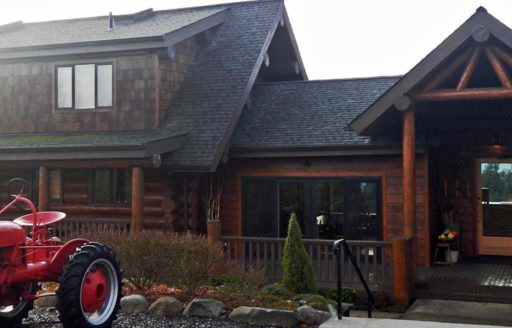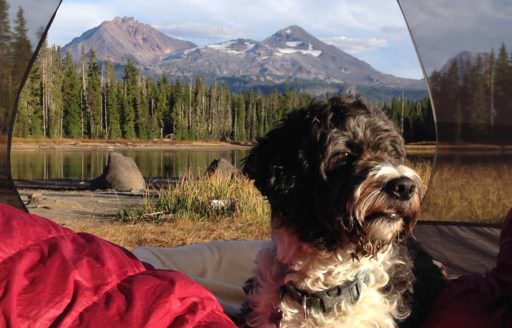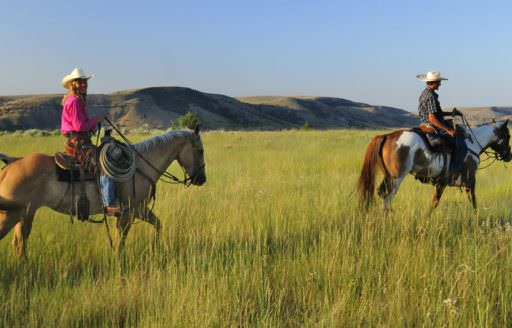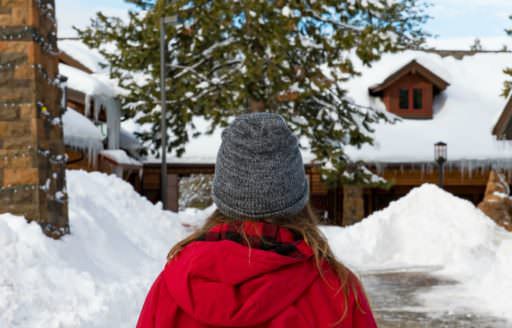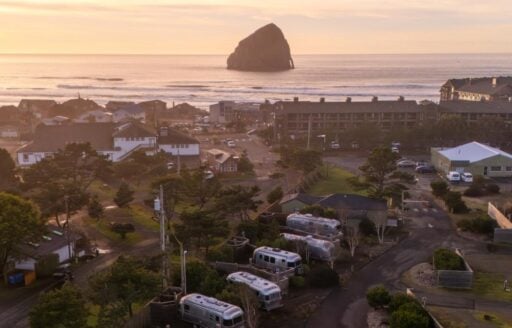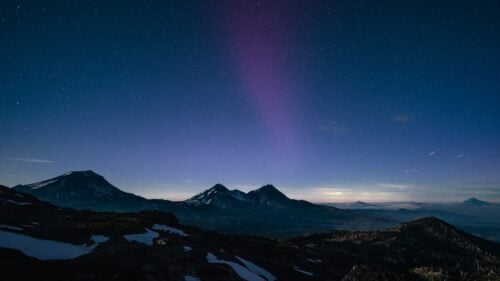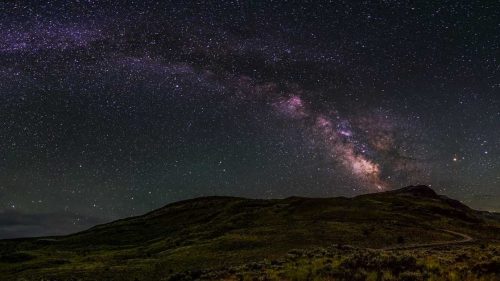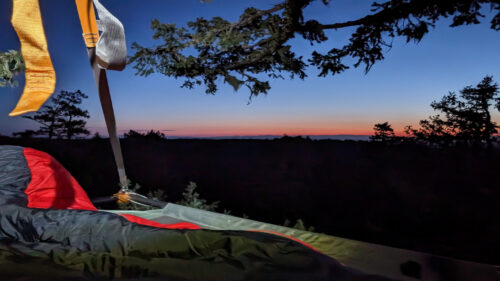Oregon has some of the darkest skies on the planet, and April — when days and nights are nearly equally long — is a great time to take a trip into the cosmos. During International Dark Sky Week in April, leave the light behind and find a dark place to gaze skyward. That’s easy in Oregon, where you’ll find ample open space, parks and sanctuaries offering stellar adventures.
Here’s a quick look at some of the special stargazing events planned for International Dark Sky Week 2025 and beyond:
- OMSI Portable Planetarium, Paisley (April 22) and Lakeview (April 23)
- PLAYA Experience: Outback Dark Sky Celebration Week, Summer Lake (April 24-26)
- Community Dark Sky Party & Open Mic, Summer Lake (April 26)
- Fort Rock Sunset Hike and Dark Sky Tour (May 24, June 21, July 18, Sept. 20, Oct. 18)
- Dark Sky Event, Lincoln City (April 24), includes a drop of 30 special-edition dark sky-themed glass floats April 24-27
For more events, visit DarkSky Oregon.
The Oregon Outback International Dark Sky Sanctuary is just one of the state’s growing list of destinations now internationally recognized for preserving a wild and starry night. As of 2025, Oregon’s Dark Sky-designated zones now include two new areas, Sisters and Antelope, as well as Cottonwood Canyon State Park, Sunriver, Oregon Caves National Monument and Preserve, and Prineville Reservoir State Park.
Oregon-based nighttime photographer Ben Canales has wandered the state capturing the beauty of a truly dark sky. Here, he shares seven of his favorite places.

1. Broken Top Near Bend
Broken Top, a stratovolcano 20 miles west of Bend, rises high over the Three Sisters Wilderness. A seasonal lake on the backside of the extinct volcano reflects its glacially eroded peaks and amplifies the stars, but don’t mistake that glowing color for the Northern Lights. “Airglow shimmers a gentle green,” explains Canales. “Our eyes can barely notice the ‘haze’ in the sky, but the camera can capture it very distinctly.”
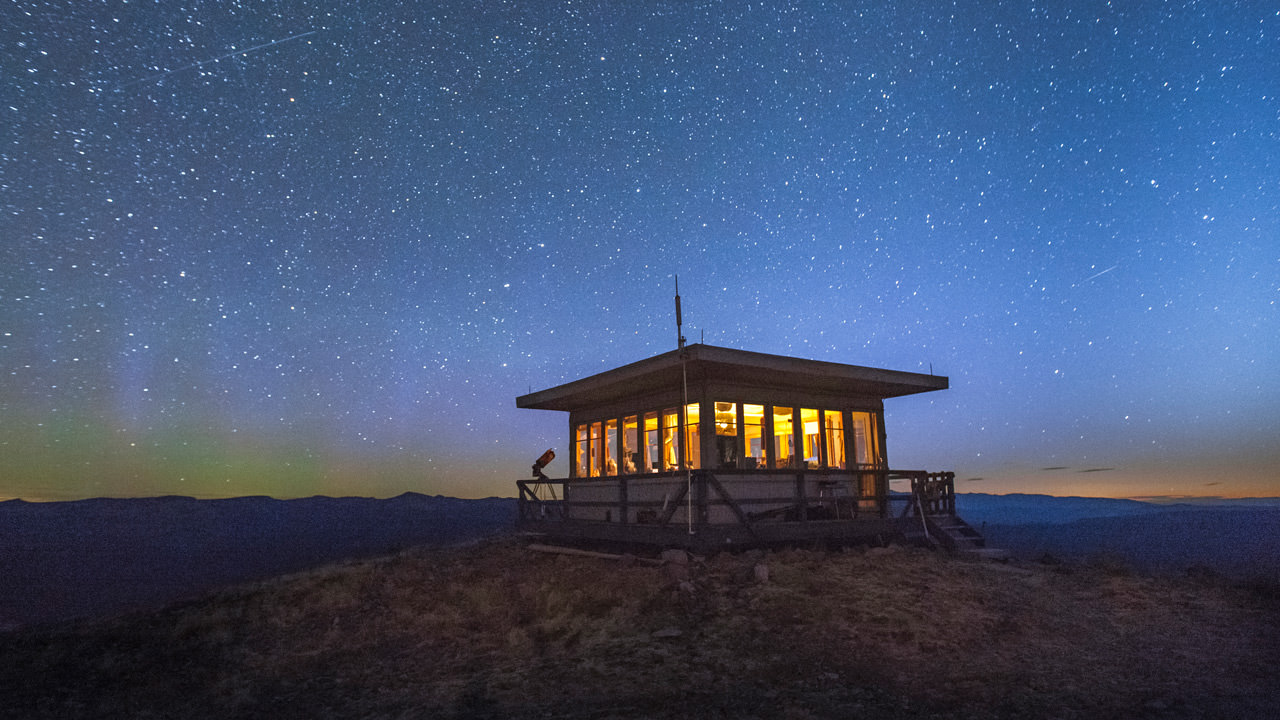
2. Dixie Butte in the Blue Mountains
The novelist Jack Kerouac famously wrote about his experiences staying in a fire-lookout tower in the Pacific Northwest, and while he never ventured to Dixie Butte in the Malheur National Forest, it’s a good bet that the limitless sky of stars and the panoramic view from this summit in the Blue Mountains would’ve inspired a few more stories. When planning a trip, keep in mind that this lookout is staffed during summer months, but the Dixie Campground offers first-come, first-served sites just a short drive from the butte.

3. Alvord Desert Near Steens Mountain
The remote Alvord Desert in Southeast Oregon offers some of the lowest light pollution in the continental United States, making this an out-of-this-world setting to ponder what other life lies in the twinkling universe on display overhead. Here Canales shot the approaching sunrise, which casts a glow on the horizon as the fading moon shines above. The triangular zodiacal light — caused by sunlight scattered by space dust — appears as a diffuse white glow in the sky.
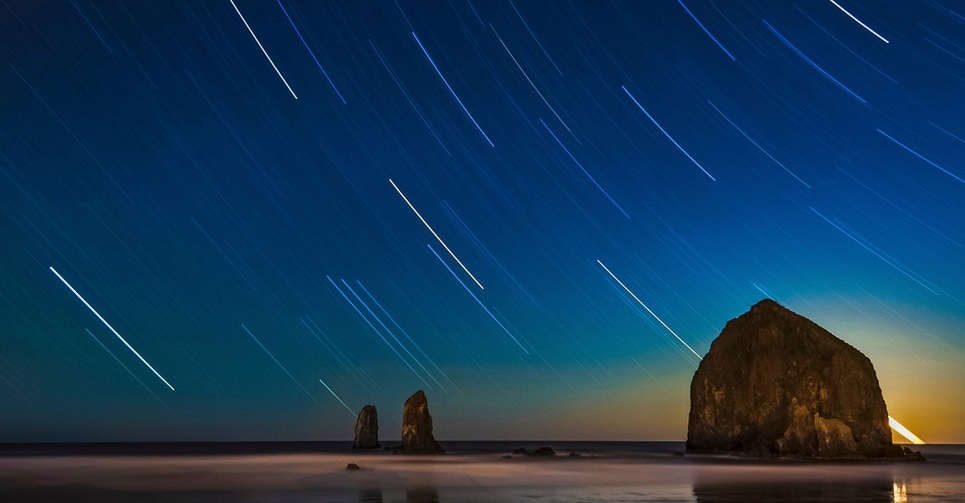
4. Cannon Beach on the Oregon Coast
This 235-foot sea stack in Cannon Beach known as Haystack Rock ranks among the most-photographed natural landmarks in Oregon, but walk along the shore on a clear night to get a different view with stars shimmering in the background. The streaking light depicted here isn’t a meteor shower but a technical sleight of hand. Canales took a 45-minute exposure to blur the rising moon and constellation of Orion, seen here as an obscure trio of lines disappearing into the haze on the horizon.
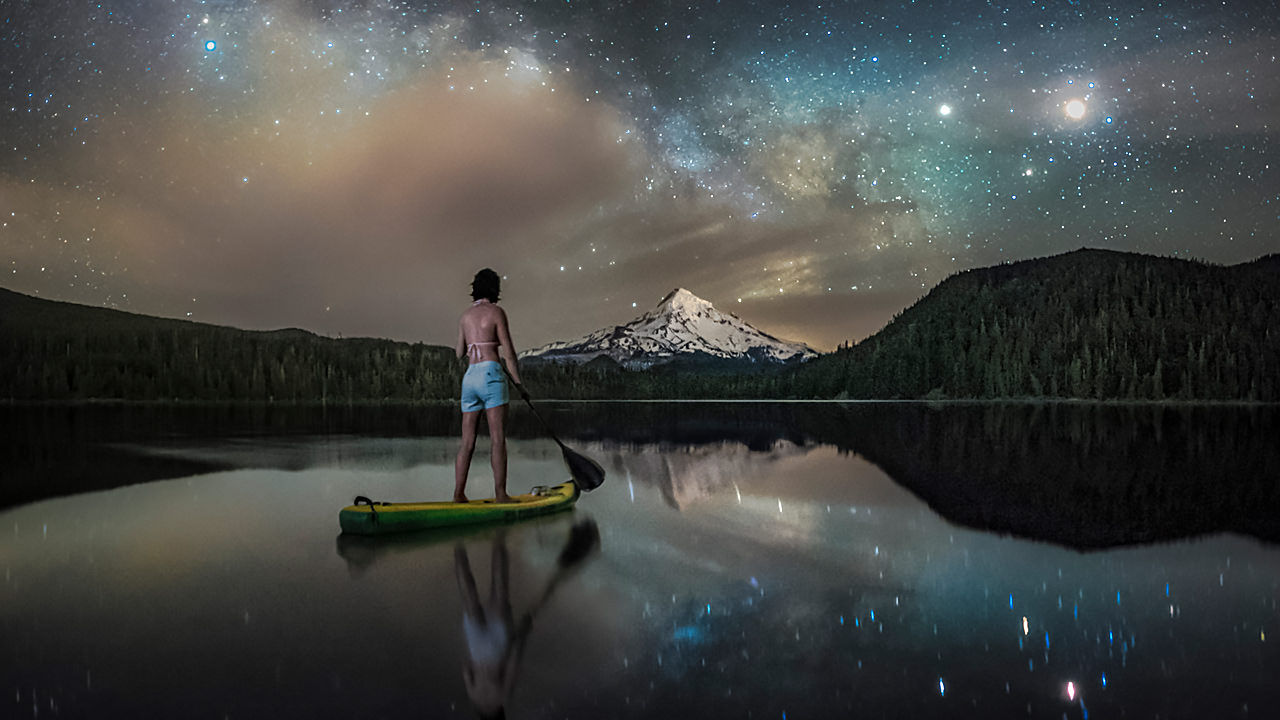
5. Lost Lake Near Mt. Hood
With a surface as still as glass, the 245-acre Lost Lake in the Mt. Hood National Forest seems like a massive reflection pool designed by nature to accentuate the commanding view of Mt. Hood in the distance. On clear nights like this one, twinkly lights plaster the sky and shimmer off the dark waters of the lake, doubling the star power and making the entire scene feel surreal. “It’s an insane view — standing on the board and seeing all of these stars shimmering on the water,” says Canales, who took this shot while paddling with friends after dark.
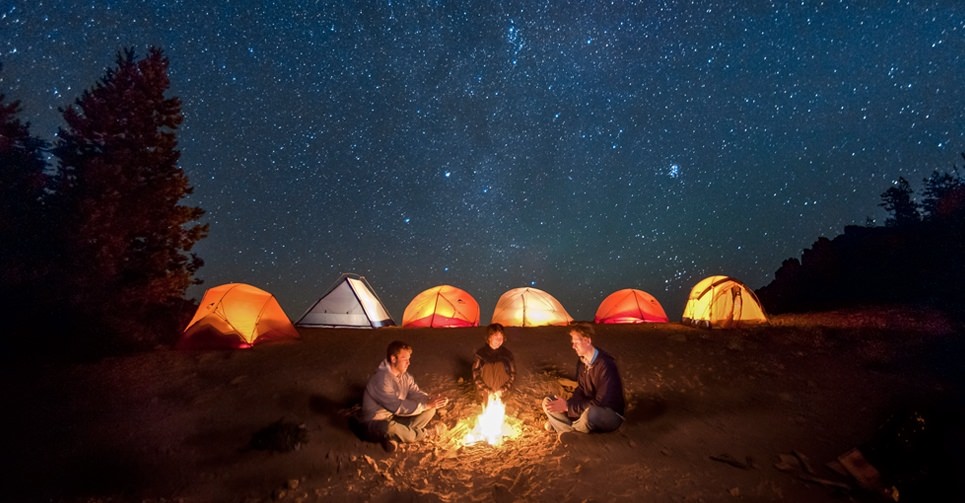
6. High Rock on Mt. Hood
Dirt roads near Timothy Lake, located in the Mt. Hood National Forest, wind to the High Rock area, with views of rolling hills, rocky outcroppings and Mt. Hood in the background. You’ll need a sporty, four-wheel-drive vehicle to reach this remote viewpoint, but that means it’s a perfect spot for watching a celestial event unfold. Canales and a few friends hauled tents and camping gear here to watch the Perseid meteor shower. “After 100 shooting stars, we just stopped counting,” he says.
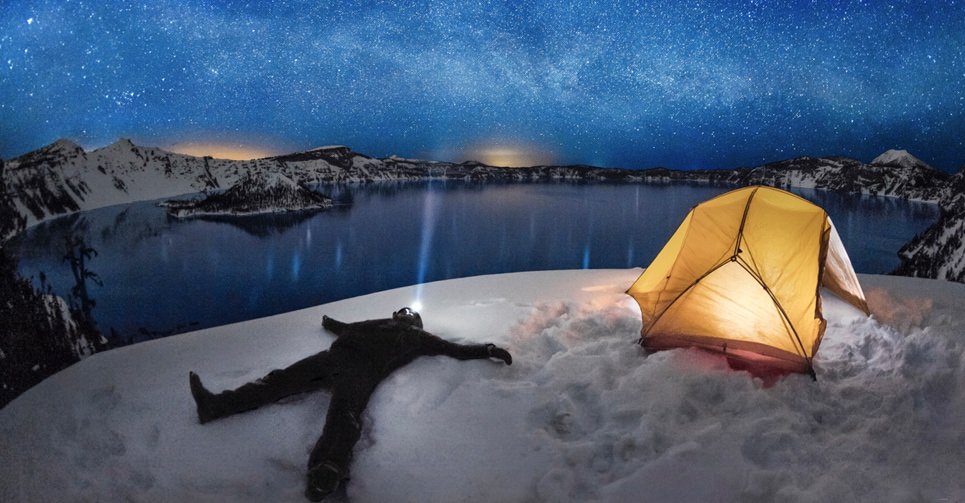
7. Crater Lake National Park
Canales once won National Geographic Traveler’s photo contest for this whimsical, long-exposure shot of a starry night spent camping at Crater Lake National Park, where you’ll find the deepest lake in America and among the deepest in the world. “Up there you feel more than above the world,” he says. “You feel disconnected — like an island floating high up in the sky. It’s moments like these when real life leaves fiction in the dust.”
Tips for Better Stargazing
Choosing a spot in Oregon for a celestial trip isn’t rocket science — look for open spaces, check the weather for clear skies (most commonly found east of the Cascade mountains in Central and Eastern Oregon) and target areas outside of cities, where light pollution corrupts the view. Also, keep an eye on the moon’s phases; plan a trip within three to four days around a new-moon weekend, when stars become most visible to the naked eye.
Those seeking a more guided experience can attend the annual Oregon Star Party, which welcomes hundreds of amateur astronomers from around the country in late June at the Indian Trail Springs in the Ochoco National Forest, about 45 miles east of Prineville. The Cascade Center of Photography leads a five-day tour of the Oregon Outback International Dark Sky Sanctuary in July.
If You Go:
- Be prepared as you travel to remote areas like the Oregon Outback, where cell service and gas stations are limited.
- You may want to bring a camera and tripod, binoculars and a paper map along with your Ten Essentials and download an app for stargazing. Most headlamps have a red-light setting that will let you see at night but won’t disturb wildlife or other stargazers.
- Support and be respectful of nearby small communities as you travel, and always be sure to pack everything out.



